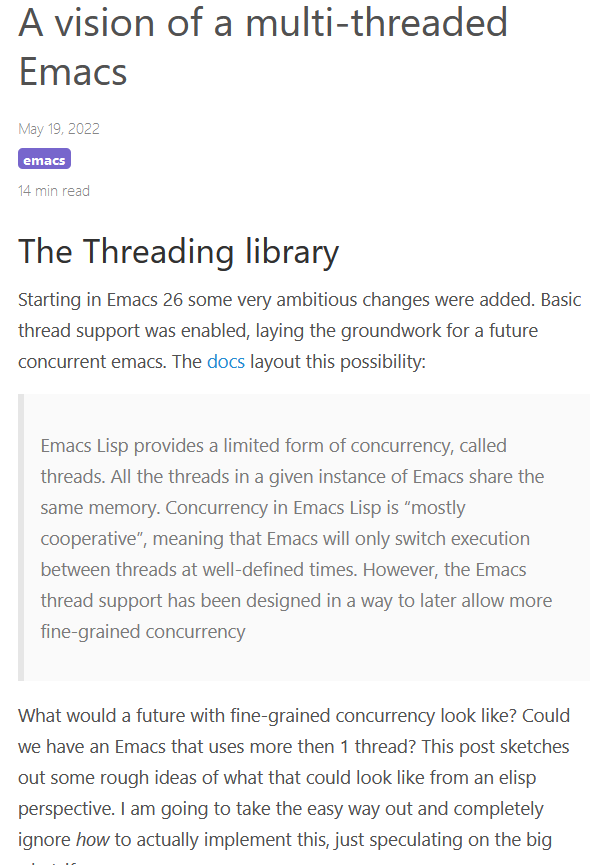xtodo emacs research
- emacs treesitter
declare-functionadd to tutorial maybe
- 2023-09-01 read
(declare (side-effect-free t))
- emacs lisp fix xah-powershell-mode.el comment syntax
- make xah PowerShell mode to support coloring block comment
- make dired accept a list of file paths and display them in dired, replacing
find-diredneed unix tool. - the list of file paths can be generated from emacs lisp or PowerShell.
- problem seems, emacs dired does not have interface to accept list of file paths
- 2022-05-06 emacs
project-find-file

lsp, language server protocol
- Eglot package is now part of emacs. eglot. this is mostly for emacs lisp coders to write major modes using LSP.
- author is João Távora (aka joaotavora) https://github.com/joaotavora/eglot
;; look into, which diff emacs uses, and which shell, how to set them, etc ;; (setq diff-command "diff") (setq shell-file-name "pwsh") ;; "C:/Users/xah/bin/emacs-29.1_1/libexec/emacs/29.1/x86_64-w64-mingw32/cmdproxy.exe"
;; -*- coding: utf-8; lexical-binding: t; -*- (display-images-p) ;; t w32-use-native-image-API ;; t image-types ;; (bmp svg webp png gif tiff jpeg xpm xbm pbm) (image-type-available-p 'svg ) ; t (image-type-available-p 'webp ) ; nil (image-type-available-p 'imagemagick) ; nil (image-size SPEC &optional PIXELS FRAME)
- 2023-09-01
- stop abbrev expansion in minibuffer
- emacs 29
- *** You can now define abbrevs for the minibuffer modes.
- minibuffer-mode-abbrev-table and
- minibuffer-inactive-mode-abbrev-table are now defined.
- 2023-09-01
- Emacs Version Control Commands (vc)
look at these and doc them
(set-language-environment "utf-8") (set-default-coding-systems 'utf-8-unix) ;; (set-terminal-coding-system 'utf-8-unix) ;; (set-keyboard-coding-system 'utf-8-unix)
symbols.
;; make a new obarray of length 255 (setq xx-obarray (make-vector (1- (expt 2 8)) 0)) ;; ideal length is prime number of 2^n - 1 ;; for good hashing ;; s------------------------------ ;; create a uninterned symbol with name yy (setq xx (make-symbol "yy")) ;; s------------------------------ ;; use gensym to make sure the symbol is unique. ;; gensym uses a incremental counter appended to symbol name, for uniqueness ;; useful when creating code programatically (gensym "y") ;; sample output ;; yy15
keywordp-
(keywordp OBJECT)returns t if OBJECT is a symbol whose name starts with : and interned in the standard obarray. else
nil.
list-command-historyminibuffer-follows-selected-frameresize-mini-windowsmax-mini-window-heightenable-recursive-minibuffers
- explore nested defun, the function name
- 2022-06-18 emacs , read about emacs 28 undo redo, update blog.
- 2022-06-18 emacs lisp , update symbols page. write on creating symbol. cross check Wolfram language page.
- 2022-06-11 emacs
tab-line-mode•global-tab-line-mode - 2022-06-06 emacs
hs-minor-mode, thanks to infu for the info.
dion emacs lisp todo
Emacs Lisp Color Parts of Buffer by a Given Major Mode
- font-lock-fontify-region-function
- look at org-src.el
- look at mhtml-mode.el